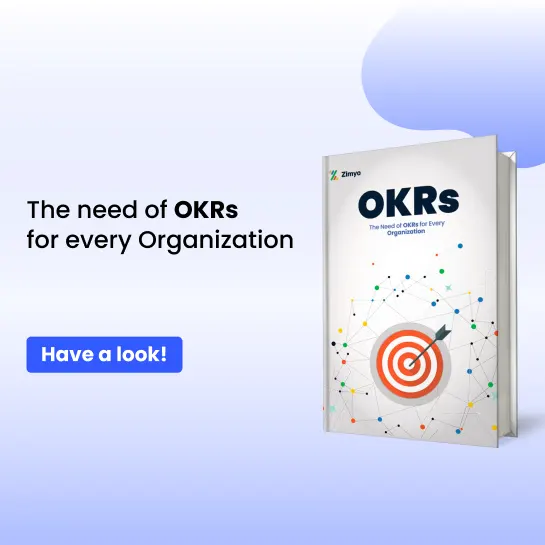Gallup’s survey finds that as high as 67 percent of employees are not engaged at work. With the pandemic creating even more challenges in the world of work than ever before, this number can increase if left unchecked.
Disengaged employees cost UK businesses a significant loss of pounds every year. Disengaged employees are likely to be ambivalent about their work. This affects job performance, customer service levels, and employee retention numbers.
Clearly, every empirical evidence shows that ensuring your employees are engaged at work can decrease absenteeism, increase profits, improve customer relations, and amplifies productivity. Highly engaged employees can outperform their peers by 147 percent in earnings per share. Organisations need to check signs of disengagement first, and then strategise their engagement initiatives accordingly. Before we understand the signs of a disengaged employee, lets see what can cause disengagement in the first place.
What Causes an Employee to Become Disengaged?
The global pandemic has disrupted all aspects of life as we know it, including in the workplace. The Coronavirus has affected the workplace and employees physically via social distancing, as well as emotionally and mentally. These uncertainties of the virus, combined with sudden and unexpected changes in professional and personal lives, has led many people in the workforce to experience increased feelings of burnout and anxiety.
These uncertainties of the virus, combined with sudden and unexpected changes in professional and personal lives, has led many people in the workforce to experience increased feelings of burnout and anxiety. 53% of employees surveyed by HBR say they feel more exhausted since the outbreak of the pandemic.
Let’s look at the reasons that might cause disengagement within the employees in an organisation:
- Lack of tools
Every employee wants to do their job in the best way possible. But if they do not get the required tools to complete their task, they can get dissatisfaction with their workplace. Thus, resulting in low job fulfilment and elevated levels of disengagements.
- No recognition
Recognition is an essential part of the company culture. It not only increases employee’s morale but also enhances the overall productivity of employees. When employees work well and get acknowledged, they feel valued and get more attached to the company. But if they do not receive an acknowledgement, it affects their enthusiasm, and it drastically decreases their confidence, resulting in disengagement.
- Poor career growth
Your workers are more likely to be engaged in their work if they feel that their career is on the correct route. But if the employees do not receive the essential training to learn something new, they might be less driven towards their job and become disengaged at work.
- Delegation
The manager should delegate their employees before giving them jobs and tasks. With proper delegation, the employees are more likely to become proficient in what they do. However, if there is no delegation, then there are high probabilities of your employees making more mistakes. It can result in conflict between staff and increase disengagement.
- Lack of communication
To excel at their jobs, employees require frequent feedback throughout the year. It is only feasible when there is complete transparency of communication going on with seniors and the employees. According to a repot by Fast Company, 67 percent of employees haven’t received a single piece of constructive feedback from their manager in the past 30 days. Lack of communication might also mean failure to appreciate and recognise the efforts of employees during these tough times.
If there is a lack of conversation within the company, then the workers may feel lost with their work in their hands. They won’t analyse whether they are moving towards the right path or not, which will eventually lead to employees succumbing to disengagement.
Signs of a Disengaged Employee
There are various signs that your employee is actively disengaged at work, though each could be linked with different issues unique to your workers. While considering each disengagement symptom, a manager should see them in the context of what is happening in the organisation, keeping in mind that they could indicate something else such as personal problems or mental health conditions.
Let’s try to uncover some of these signs:
1. Team withdrawal
If one of your workers was once a social member of the team but now has started pulling away, he or she is likely disengaged.
When employees prefer to spend time by themselves, miss work socials, and do not seem to be a part of the unit anymore, it must be investigated.
Team withdrawal can be a sign of many things, including issues with colleagues or bullying. If you investigate, and this does not seem to be the case, it can be a clear sign of disengagement.
When workers no longer feel connected to the company, they remove themselves from any non-necessary activities and deduct the amount of time they spend with the company members.
They also tend to do only the minimum to get by, decreasing their productivity and no longer providing a discretionary effort. Managers can meet with the disengaged employee to find out why this is occurring.
2. Customer dissatisfaction
Tracking customer reviews will always come in handy. When customers give bad ratings to an employee who usually performs well, it can be a sign of faltering engagement. Although customers are not always fair, they provide valuable information.
Targets are unrealistic. Even if workers are giving their all to meet their targets, they will eventually give up. And sometimes, the bar may be set too low. Workers will not feel challenged or stimulated by their tasks or jobs.
3. High absenteeism
An employee taking frequent leave is a clear sign of disengagement. Sudden sick leaves with odd stories as alibis are signs that the employee would rather not be in work or office. Even when employees are in the office, keep an eye out for them not to work consistently and focus on all sorts of distractions like being on their phone, wandering off, talking to others, etc.
Employee motivation is essential when we talk about employees being committed to the company. When there is a sense of purpose in them, they are more likely to be the runners to take the company towards the next significant milestone. But if they feel that the task or job is not an excellent fit for them, they will be less driven towards the company’s purpose. They will try to avoid work, increase in absenteeism will eventually lead to disengagement.
4. Limited communication
When employees trust their supervisors or seniors, they share their ideas and problems with the managers. Disengaged employees do not interact with managers. You may notice that they communicate minimally with management. When they do, they lack rapport and spontaneity if employees seem to be more inclined towards gossip and chit-chats than official announcements and guidelines. You may have a case of low engagement in your office.
This sign is critical as it is contagious. If workers do not express their problems to management, they will be more likely to ignore that problem. They end up inflating issues and complaining, spreading low morale and frustration to their team members or peers.
Engagement levels will undoubtedly negatively impact when a calm employee abruptly starts having anger issues at work. Situations like these can affect the work environment negatively.
When things like these happen, then it is a crystal-clear sign that the said employee is not happy with their job and going towards disengagement. And it can lead to a decrease in morale and conflicts among team members.
5. Joining late and signing off early
Being late for work is a normal thing and happens to anyone. It may work because of some personal work or some emergency. However, disengaged employees are being late more frequently and leave early purposely.
It is a well-known red flag. Disengaged employees do not rush to the office in the mornings. Frequently, a delay of up to 10-15 minutes is excusable, especially if workers try to make up for a lost time. It is a bad sign if your employee is extremely late and leaves the office at random moments or takes prolonged lunch breaks.
It is not constantly the case that your employee is disengaged if he does not arrive on time. It can also be why he may lack time management skills, struggle with life-work balance, or have a different culture. Opting for flexible hours, training, or working from home options could help.
6. Compromised quality of work
Disengaged employees do not aim for maximum quality. Actively disengaged employees will not meet expectations, or they may be doing just enough not to get fired. But, if overall quality decreases or stagnates, it may be a sign of low engagement.
Employers should be wary. It is better to view subpar activities as one of the many red flags for employee engagement instead of defining the sign. Bad results can have diverse causes. Low work quality can be the reason for inefficient processes, unrealistic targets, or insufficient resources. Look for additional symptoms that point to a lack of employee engagement, so you can focus your resources on solving the problem.
7. Avoiding responsibilities
Engaged employees are likely to open to new challenges and responsibilities; disengaged employees often do the opposite. They avoid further problems and make excuses when it comes to taking responsibility. It is a symptom that they do not want to get involved and slide away from duties making them more disengaged.
8. Not asking for advice.
Sharing ideas, asking questions, or researching various areas are ways that workers will show that they are highly engaged.
When an employee is disengaged, he has no interest in progressing, learning, or being part of the bigger picture; we can say that they won’t be motivated towards the company either.
If you are encouraging your workers to learn and develop, and they show no interest in doing so, it is a sign that they do not have the desire to grow. On the other hand, engaged employees will be thinking about their long-term career progression, whereas disengaged employees will not.
How Can You Revive Their Interest?
If you see the above-stated signs of disengaged employees. Worry not; there are ways to fix that issue, such as:
- Ask questions
To find out how to re-engage your workers, you need to find out what switched them off. Many workers may not feel comfortable discussing any points they feel pessimistic about in the company or admit that they are not feeling.
By asking questions around the topic of company culture, the management, or poorly allocated responsibilities, you can figure out the cause of disengagement in your company.
- Evaluate workload
Disengagement often comes from the sheer volume and complexity of the workload you are giving to your workers. Ask yourselves the following questions:
- Is the work too difficult and complicated?
- Is the work not challenging enough?
- Are the goals or tasks realistic?
If one employee is going through difficulty with the workload – whether it’s too little or too much, there are chances that many of your staff members are going through that too. Take the time to focus on auditing the workload. Understand that if your employees are feeling overworked or not.
- Appreciate
Disengagement can stem from workers feeling that they are working hard for little in return. It is essential to show your employees how much you appreciate them and recognise their work and efforts.
When employees feel rewarded and recognised for their work, they become more engaged. They will also be motivated to go the extra mile because they know that it will not go unnoticed.
Parting Thoughts
Understanding how to identify disengaged employees and acting on those observations will help your business attract and retain employees and get the most out of your workforce to overcome the current productivity slump. Recognition and praises are robust practise that boost the component of morale and motivation. As an employer, it is your duty to look after the well being of your employee and provide them a comfortable work environment, so they perform their duties to the maximum.











